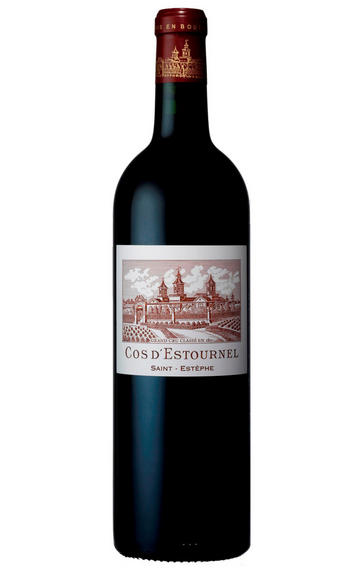
2021 Cos d'Estournel, St Estèphe, Bordeaux
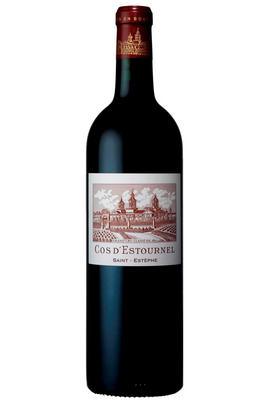
Critics reviews
The 2021 Cos d'Estournel has an attractive nose, more complex than the Pagodes (as you would expect), graphite and subtle cigar box scents permeating the black fruit and the Cabernet Sauvignon more expressive at this stage vis-à-vis the Merlot. The palate is medium-bodied with fine tannins. One of the most velvety Cos d'Estournel wines I have encountered at this stage, though linear and strict on the saline finish. This is old-school in some ways, and a bit grumpy in its youth – a wine that will oblige cellar aging. A Saint-Estèphe for the patient among you. (12.74% alcohol)
Drink 2028 - 2050
Neal Martin, vinous.com, (May 2022)
This vintage, which can be overly straight and austere, benefits from the house style of Cos, where they are happy to add a twist of gourmet glamour, and I am seriously impressed with this wine. It showcases the successful sides of a cool vintage in spades, with bitter black chocolate, cool blue fruits, lemongrass and turmeric and black pepper spices. 55% new oak. 3.79ph. 53% of overall production is for the 1st wine, the rest in Pagodes. Easily one of the wines of the vintage.
Drink 2028 - 2042
Jane Anson, janeanson.com (May 2022)
Dark and reticent with a touch of cassis as the wine opens. Linear and firm with a rich but fine tannic frame. Solid through the mid palate and on through the finish. Structured and with plenty of matière. Well within itself so room to develop.
Drink 2030 - 2050
James Lawther, jancisrobinson.com (May 2022)
The 2021 Cos d'Estournel is very promising, offering up rich aromas of dark berries, plums, exotic spices, loamy soil and rose petals, followed by a medium to full-bodied, deep and seamless palate that's impressively vibrant and concentrated, with powdery tannins, bright acids and a long, penetrating finish. Only 53% of the production made it into the grand vin, and the blend is 64% Cabernet Sauvignon, 30% Merlot, 4% Cabernet Franc and 2% Petit Verdot. Technical director Dominique Arangoïts reports that Cos was spared by frost and coulure at flowering, harvesting between September 23 and October 4, and fermenting a touch hotter than has been the case in recent years, at around 28-29 degrees Celsius.
William Kelley, Wine Advocate (Apr 2022)
A firm red with solid, compact tannins. Medium to full body with plenty of blackcurrant, pencil-lead and graphite character. Compact and structured throughout, with a firm finish. Linear and muscular tannins at the end that are very formed and curated. It will be interesting to see how this one evolves. 64% cabernet sauvignon, 30% merlot, 4% cabernet franc and 2% petit verdot.
James Suckling, jamessuckling.com (May 2022)
About this WINE
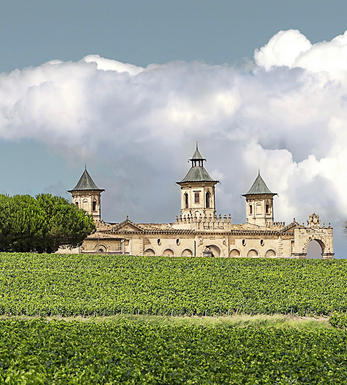
Cos d'Estournel
Château Cos d`Estournel is named after its 19th century owner, Louis-Gaspard d'Estournel, and it was he who built the bizarre oriental edifice that is a landmark for any tourist in the Médoc. Today Cos d'Estournel is without doubt the leading estate in St-Estéphe. It is located in the south of the appellation on the border with Pauillac and its vineyards are superbly sited on a south-facing gravel ridge with a high clay content, just north of Lafite.
Cos d'Estournel is typically a blend of 60% Cabernet Sauvignon, 38% Merlot and 2% Cabernet Franc - do not be fooled by the relatively high Merlot content, as these are full-bodied, dark, brooding tannic wines when young which develop a complexity and intensity that can rival many top growths from Pauillac.
In 1998 the Prats family sold Cos d'Estournel to The Tailan Group. Cos d'Estournel is classified as a 2ème Cru Classé.
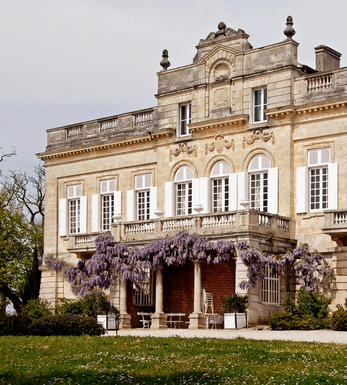
Saint-Estèphe
Saint-Estèphe is the northernmost of the most important communes of the Médoc and borders Pauillac on its southernmost border, with only a gully and stream separates it from Ch. Lafite. To the north lies the Bas-Médoc.
Saint-Estèphe is defined by the depth of its gravel, which is ubiquitous but of varying depths and occasionally very shallow, when clay predominates. This keeps the soil cooler and wetter than its counterparts so that the wines can appear fresh in lighter vintages, but superbly successful in hot, dry years.
The best châteaux in the south of the commune have the deepest soil and the thickest gravel. Cos d'Estournel has an exceptional terroir with its vineyards being located on a south-facing ridge of gravel with excellent drainage.
Saint-Estèphe is the least gravelly of main Médoc communes and in the north of the commune the vineyards are heavier and more clay-based leading to a rustic style of wine being produced.
The wines can appear austere in youth with a discernable ferric note at some châteaux, but the best typically display good depth of colour, pronounced acidity an tannins in youth and are exceptionally long-lived. At their best, they are the equal of almost any Bordeaux. The well-regarded St Estèphe co-operative controls the production of about half the appellation.
Recommended Châteaux
Cos (Ch. Cos d'Estournel), Ch. Montrose, Ch. Calon-Ségur, Ch. Lafon-Rochet, Ch. Les Ormes de Pez, Ch. Beau-Site, Ch. Cos Labory, Ch. Phélan-Ségur
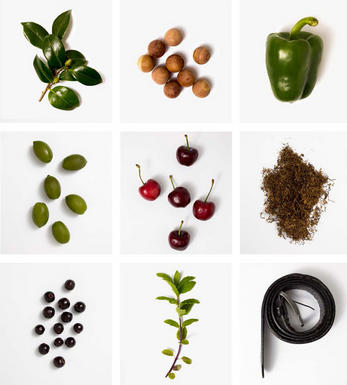
Cabernet Sauvignon Blend
Cabernet Sauvignon lends itself particularly well in blends with Merlot. This is actually the archetypal Bordeaux blend, though in different proportions in the sub-regions and sometimes topped up with Cabernet Franc, Malbec, and Petit Verdot.
In the Médoc and Graves the percentage of Cabernet Sauvignon in the blend can range from 95% (Mouton-Rothschild) to as low as 40%. It is particularly suited to the dry, warm, free- draining, gravel-rich soils and is responsible for the redolent cassis characteristics as well as the depth of colour, tannic structure and pronounced acidity of Médoc wines. However 100% Cabernet Sauvignon wines can be slightly hollow-tasting in the middle palate and Merlot with its generous, fleshy fruit flavours acts as a perfect foil by filling in this cavity.
In St-Emilion and Pomerol, the blends are Merlot dominated as Cabernet Sauvignon can struggle to ripen there - when it is included, it adds structure and body to the wine. Sassicaia is the most famous Bordeaux blend in Italy and has spawned many imitations, whereby the blend is now firmly established in the New World and particularly in California and Australia.


Buying options
Add to wishlist
Description
Cabernet Sauvignon 64%, Merlot 30%, Cabernet Franc 4%, Petit Verdot 2%
We found some stars in St Estèphe in 2021; Cos d’Estournel was among them. Proximity to the river and strict leaf-thinning helped ward off frosts, coulure and mildew, achieving perfect ripeness and a reduction in yield of just 10%.
The nose sings of pure blackcurrant, with highlights of blueberries, violets and warming, exotic spices. Myrtles, damsons and more blackcurrants emerge on the palate alongside a note of graphite minerality.
This is a very elegant wine, showing delicacy, purity and refined concentration. It finishes with linear but velvety-smooth tannins and some vibrant acidity.
Drink 2028 - 2050
Our score: 18/20
wine at a glance
Delivery and quality guarantee